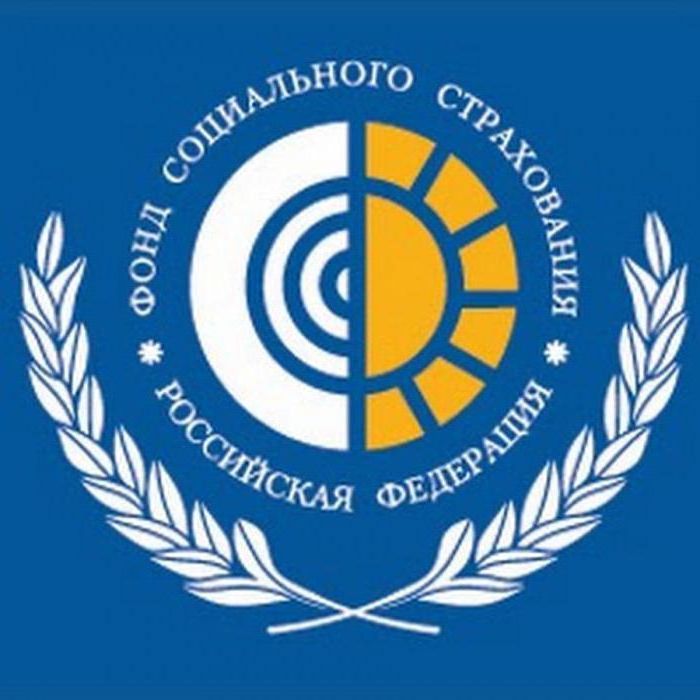Social insurance is a system of social protection of the population, the task of which is to ensure the implementation of the constitutional rights of citizens to financial support in case of partial or complete disability, illness, unemployment, loss of a breadwinner and in other situations. Historically, such forms of social insurance have been defined as state, collective (organized by trade unions) and mixed (based on the interaction of trade unions and the state).
History tour
The earliest form of social protection of citizens is collective social insurance, which appeared in Europe in the second half of the nineteenth century at the same time as the trade unions that defended the rights of wage workers before the state and employers. In this regard, England is a typical example - in this state social security was provided as collective self-help and self-insurance by creating sickness funds, mutual assistance funds, unemployment funds.
The first legislative decision in the history of the issue of social protection of the population was adopted in Germany, where in 1883 state social insurance was introduced as part of the reforms carried out by Bismarck. Laws have been enacted securing material support for citizens in case of illness, as well as in the case of old age and disability. These types of social insurance were to provide cash registers of enterprises, sickness funds and free mutual assistance cash registers. Contributions were established by law and proportionally paid by workers and employers: two-thirds and one-third of the amount, respectively.
Mixed social insurance first appeared in Switzerland. In this country, in 1893, under the municipality of Berne, a cash support fund for citizens in the event of unemployment was established under the supervision of a commission composed of representatives of the municipality and trade unions, as well as employers. Membership was voluntary: every Swiss citizen could join the cashier, and after nine months from the beginning of the payment of contributions, he received the right to unemployment benefits for a period of seventy days for one year.
History of social insurance in Russia
In 1861, the law "On the Compulsory Establishment of Subsidiary Partnerships at State Mining Factories" was adopted. From that moment, the social insurance system in Russia began to take shape. The funds accumulated workers 'contributions (usually two to three percent of the salary) and plant management contributions (in the amount of the annual amount of workers' contributions). The funds received were used to pay pensions to widows, the disabled, orphans and sickness benefits.
In 1912, the Third State Duma adopted a package of laws that laid the foundation for Russian social insurance. And in 1918 social security was introduced - “free” social insurance for workers. It was supposed to charge funds from entrepreneurs and enterprises, as well as from the state budget.
During the new economic policy, in 1921, there was a need to return the practice of insurance when payments are not provided at the expense of the state, but from funds formed by making contributions. After abandoning the NEP policy, the system of social insurance and risk accounting was again maximally simplified.
Since 1933, social insurance was taken over by trade unions, and by 1938 a model emerged that was based on the centralization of money collected and spent according to uniform rules. All funds consisted of payments from enterprises and payments from the state budget. Medical services were withdrawn from the insurance system - it was financed only from the budget.
Compulsory insurance in the Russian Federation
This is part of the state system of social protection of the country's population, the specifics of which is insurance of working citizens of Russia against possible changes in their social and / or material situation, including for circumstances beyond their control.
The Federal Law on Compulsory Social Insurance provides for a six-part protection system:
- In case of illness (temporary disability).
- In connection with motherhood.
- In case of death of the insured person or a member of his family under the age of majority.
- Social insurance at work (against occupational diseases and accidents).
- Health insurance.
- Pension insurance

the federal law
The fundamentals of social insurance in the Russian Federation are enshrined in the federal law of July 16, 1999 No. 165-ФЗ “On the Basics of Compulsory Social Insurance”, as well as other legislative acts. The Federal Law consists of five chapters and twenty-nine articles; it has a small volume, however, despite this, it purposefully and capaciously regulates the main issues in the field of social protection of the population.
Basic information regarding the compulsory insurance system is given in the first chapter of the legislative act. In the articles you can read the definitions of the main terms used in the Federal Law, a description of the principles, forms and types of insurance. In addition, the first chapter presents the legislative framework by which this area of activity is regulated on the territory of the Russian Federation.
The Federal Law on Compulsory Social Insurance in the second chapter establishes the obligations and rights of entities involved in this field, that is, policyholders, insured persons, insurers. The liability of subjects in case of violation of the rules of compulsory social insurance is also established.
The thirteenth and fourteenth articles of the law, making up the third chapter, deal with the management of this area and its control by public authorities.
The fourth chapter regulates the procedure for financing. So, the fifteenth article regulates the budget process, and the sixteenth and seventeenth articles determine the features of the budgets of funds, as well as the sources of funds in them. Spending money, the procedure for setting tariffs, making and calculating contributions are described in detail in the eighteenth to twentieth articles of the legislative act. The procedure, conditions and terms for making insurance premiums, rules for storing funds, methods for paying insurance coverage are laid down in Articles 21-23.
The fifth chapter is the final provision of federal law. It defines the limitation period, the procedure for resolving and resolving disputes.
Social Funds and Their Functions
All financial resources intended for payments to the population are accumulated and distributed by social insurance institutions. They are made up of three funds: FSS, FOMS, PFR. Let's talk about each in more detail.
Social Insurance Fund (FSS)
This extra-budgetary state fund was established on January 1, 1991 in order to ensure compulsory social insurance for citizens of the Russian Federation.
The functions of the FSS include:
- maternity and sickness insurance: maternity benefits, lump-sum benefits at birth, early registration in the LCD, monthly allowances for the care of the baby, payment of sick leave (benefits for social insurance for temporary disability);
- providing beneficiaries with vouchers for spa treatment;
- payment of birth certificates;
- social insurance against industrial accidents and occupational diseases;
- providing disabled people with prostheses and technical rehabilitation means;
- financial support for the prevention of occupational diseases and work-related injuries.

Compulsory Health Insurance Fund (MHIF)
This extra-budgetary state fund was established on February 24, 1993 to finance medical care for the population of Russia.
Among the main functions of the MHIF are the following:
- financing of various target programs within the framework of the compulsory health insurance system;
- control over the targeted use of funds;
- alignment of the functioning conditions of territorial funds to ensure financing of targeted programs.
Pension Fund (PFR)
This is the largest organization in Russia providing socially significant services to citizens. The fund was founded on December 22, 1990 for the state management of the financial resources of the pension system and the realization of the rights of citizens of the country to pension provision.
Among the socially significant functions of the FIU are the following:
- assignment of pensions and their payment;
- the assignment and payment of benefits to certain categories of people: the disabled, veterans, Heroes of the USSR and the Russian Federation;
- accounting of funds that come in the framework of compulsory pension insurance;
- interaction with pension insurance payers (employers) and collection of arrears;
- personified accounting of all subjects of the pension system;
- issuance of certificates for maternity capital and its payment;
- management of pension insurance system funds;
- implementation of a program of co-financing of voluntary savings;
- the establishment of a supplement to social pensions in order to bring the income of pensioners to the amount of the subsistence level;
- administration of funds received under compulsory medical and pension insurance.
Fund income
All three funds have their own budgets, independent of the Russian budget system. That is why they are called extrabudgetary. The sources of funds are social insurance contributions, which are transferred by policyholders. If there is a budget deficit, the lack of money is covered transfer payments from the Russian federal budget.

The amount of insurance premiums depends on the salary of employees of organizations and enterprises, as well as other payments and remuneration. Notaries, individual entrepreneurs, lawyers determine the amount of contributions in a special manner. Funds are transferred by insurers to the regional branch of the Social Insurance Fund of the Russian Federation and the FIU branch at their place of residence.
From certain payments, insurance contributions are not paid, these include:
- financial assistance in the event of a terrorist attack or natural disaster;
- financial assistance in connection with the death of a member of the employee’s family (spouses, parents, children);
- financial assistance in the event of an emergency occurring at the employee, for example, a flood in the apartment, a robbery (the circumstance must be confirmed by a certificate of the competent authority: Housing office, police, etc.);
- per diem - if the local act of the enterprise or organization sets the limit for non-assessed contributions;
- payments on the occasion of birth, adoption / adoption of children in the amount of not more than fifty thousand rubles per child, if they were made within the first year after the event;
- payments for any purpose in the amount of four thousand rubles per year (it is allowed to pay at one time).
In addition, for employee health insurance for more than a year, contributions are not paid from expenses under the VHI agreement (voluntary medical insurance), directly to the clinic, health insurance, life insurance, private pension insurance.
Fund expenses
Social Insurance Fund produces:
- sick leave payments;
- payments in connection with maternity (benefits for childbirth, maternity, childcare up to one and a half years);
- financing of sanatorium rest and treatment;
- providing applications for citizens with disabilities for prosthetic and orthopedic products and technical rehabilitation equipment.
Each regional branch of the Social Insurance Fund of the Russian Federation transfers these payments.
The FIU pays pensions to pensioners and people with disabilities, and also finances the costs of medical care.
State social funds are spent exclusively on social protection. In addition to paying the above types of benefits and pensions, funds can be allocated for medical (diet) food, partial maintenance of sanatorium and health camps for children, as well as sanatoriums, which are on the balance of insurers.
Social insurance also includes expenses for the implementation of such types of material support for citizens of the country as a funeral allowance and unemployment benefits.
Insurance premium administration
The amounts that must be paid to the funds are calculated by the accounting department of the enterprise or organization (policyholder). Contributions must be paid to the appropriate extrabudgetary institutions on the day the employees are paid wages, but no later than the fifteenth day of the month following the settlement.
Administration consists in tracking the timely payment and correctness of the calculation of insurance premiums, accounting for payments, returning or offsetting amounts that are overpaid, accepting reports from policyholders, and recovering existing payments arrears. Two funds are engaged in this activity: FSS and PFR. The first administers the following types of social insurance:
- in connection with motherhood;
- in case of illness;
- insurance against occupational diseases and industrial accidents.
Pension Fund administers compulsory health and pension insurance.
You should be aware that for each individual (employee of an enterprise or organization) for a calendar year (billing period) an individual card is opened for recording the amounts of accrued wages, other remuneration / payments and accrued insurance premiums.
Reporting
Each quarter, policyholders submit to extrabudgetary funds reporting related to the calculation and payment of insurance premiums. If more than fifty employees work in an organization or enterprise, reporting should be mandatory submitted electronically via the Internet. In this case, an electronic digital signature is required.
A report is submitted to the Social Insurance Fund in the form of 4-FSS. On paper, it should be provided no later than the fifteenth day, and in the form of an electronic document - no later than the twenty-fifth day of the month that follows the reporting period.
It is necessary to submit a report to the Pension Fund in the form of RSV-1. On paper, it must be submitted no later than the fifteenth day, and in electronic format - no later than the twentieth day of the month that follows the reporting period. This report should contain information on insurance premiums that were accrued and paid, and on the remaining debt. In addition, the following information is submitted to each employee of an organization or enterprise: SNILS (insurance number of an individual personal account), last name, first name, middle name, length of insurance period and amount of wages for each month.
Finally
Summing up, we can say that state social insurance is a system of relations regarding the formation of centralized and decentralized reserves of material and monetary funds, which are necessary to provide assistance, redress, social content in the event of certain events.Social insurance is a mechanism through which social state policy is implemented, it is the basis of the entire social security system of the population, which acts as part of economic relations for the distribution and redistribution of national income for the formation and use of funds whose purpose is to maintain persons who for one reason or another do not accept participation in social work.








